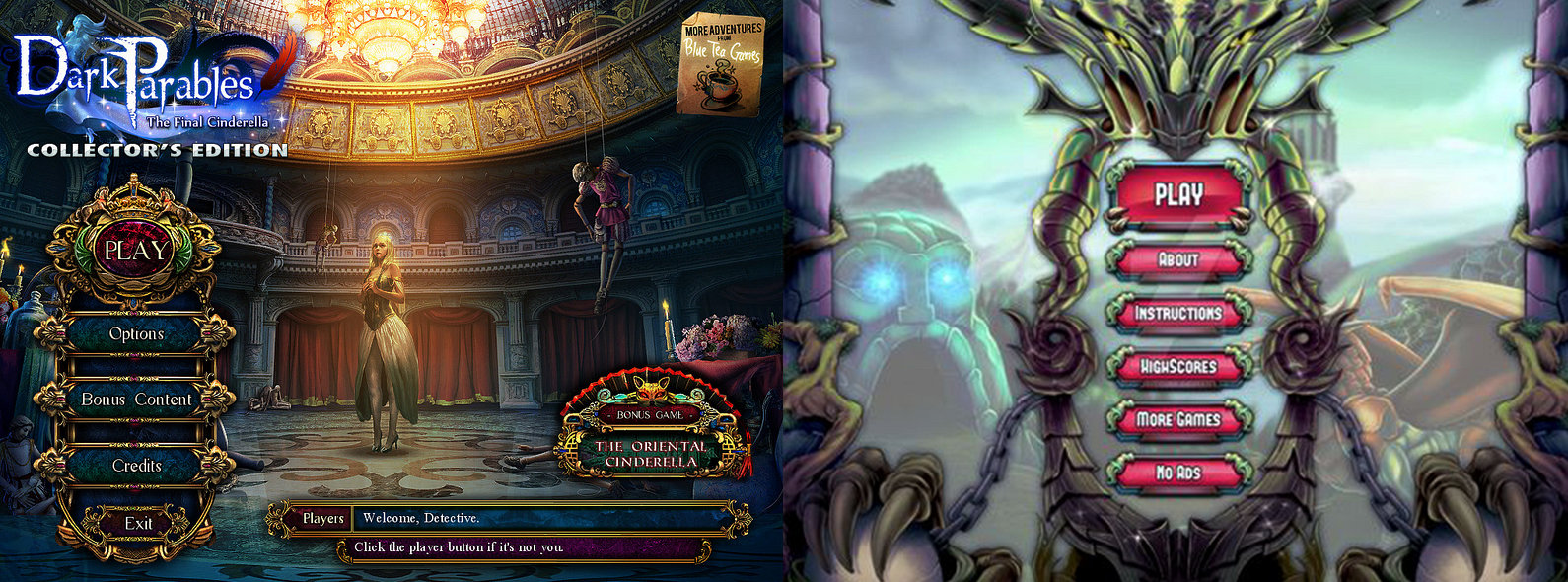Introduction to Interactive Attention
Interactive attention is a critical concept in user experience design, referring to how users focus on and engage with interactive elements within digital environments. This attention is shaped by various factors, including the dynamic nature of the content and the feedback users receive during their interactions. In an age where technology is ubiquitous, understanding interactive attention is essential for creating engaging interfaces that capture and maintain user interest.
Engagement plays a vital role in shaping attention, as it directly influences how users perceive and interact with an interface. High levels of engagement can elicit a sustained attention span, allowing users to navigate through content more effectively. Conversely, poor engagement may lead to distracted users, resulting in fragmented interactions and diminished overall experience. Therefore, designers and developers must prioritize elements that promote meaningful engagement to enhance interactive attention.
Motion and feedback are two integral components in fostering an environment conducive to interactive attention. Motion, whether through animation or transitions, draws users in and guides their visual focus across various elements on the screen. Effective use of motion can create a sense of rhythm and continuity, which helps users understand the flow of information and actions available to them. This dynamic responsiveness not only captures attention but also enriches the overall user experience.
Equally important is the role of feedback, which serves as a direct communication channel between the interactive system and its users. Feedback can be visual, auditory, or tactile, providing critical information about the outcome of an interaction. When users receive immediate and relevant feedback, they feel a sense of control and awareness in their actions, thereby reinforcing their engagement and sustaining their attention across the interactive experience.
The Science of Motion in Interactive Design
Motion plays a pivotal role in interactive design, significantly influencing user perception and attention. Research has shown that dynamic elements can capture and direct focus, effectively guiding users through an interface. Theories such as the Feature Integration Theory suggest that motion can act as a salient feature, enhancing the visibility of critical information. By generating a sense of urgency or drawing interest to specific elements, motion can influence how users interact with digital products.
One of the key findings in this domain is that motion facilitates better recall of information. Studies indicate that users are more likely to remember elements that have been animated compared to static ones. This effect can be harnessed in interface design to prioritize certain actions or information, thus increasing the likelihood of user engagement. For instance, when a button pulsates or transitions smoothly, it captures attention better than a static counterpart, leading to higher interaction rates.
Successful applications of motion can be observed across various platforms. In mobile applications, for example, intuitive transitions between screens not only enhance aesthetic appeal but also reinforce navigation patterns for users. Similarly, websites that employ subtle animations can improve user experience by providing feedback on interactions, thereby reducing uncertainty. A classic example is the use of loading animations to assure users that their action is processing, creating a more fluid experience.
Interactive designers should carefully consider the implications of motion within their projects. While powerful, excessive or chaotic motion can lead to distractions, undermining overall usability. Striking the right balance between dynamic elements and the static framework is essential for fostering a user-centered experience. In conclusion, leveraging motion thoughtfully in interface design can enhance perception, bolster user attention, and improve overall interaction outcomes, making it a vital consideration in the modern digital landscape.
The Role of Feedback in User Interaction
Feedback is a critical component of user interaction, serving as a pivotal link between users and the systems they engage with. It provides essential information that enables users to understand the results of their actions within an interactive environment. By facilitating this understanding, feedback helps maintain user attention and enhances the overall experience. In the realm of interactive systems, feedback can take various forms, including visual, auditory, and haptic feedback.
Visual feedback, for instance, often includes animated responses, color changes, or confirmation messages that indicate a user’s input has been received and processed. This type of feedback not only informs users but also creates an engaging environment that fosters active participation. On the other hand, auditory feedback—such as sounds or verbal confirmations—can provide immediate reinforcement, helping users to recognize successful actions and adjust their behaviors accordingly.
Another important aspect is haptic feedback, which involves tactile sensations that users perceive during interactions. For example, many mobile devices utilize vibration feedback to indicate user actions, such as a successful tap or a notification. This kinesthetic aspect of feedback can significantly enhance user engagement, making the experience more immersive and intuitive.
Real-world case studies exemplify the importance of effective feedback mechanisms. For instance, online learning platforms that employ multi-modal feedback help learners stay engaged by catering to diverse learning styles. These platforms employ visual cues, sound notifications, and interactive prompts that guide learners through the educational content, greatly enhancing comprehension and retention.
Ultimately, the successful integration of feedback in interactive systems contributes to user satisfaction and promotes sustained attention. Whether through visual, auditory, or haptic means, feedback enhances the interactive experience, guiding users effectively while confirming their actions within a system.
Integrating Motion and Feedback
The integration of motion and feedback is a crucial component in the design of interactive systems. Both elements play a significant role in capturing user attention and enhancing the overall user experience. When utilized effectively, motion can guide users’ focus and maintain their engagement, while feedback offers them confirmations and acknowledges their interactions. Together, these components can create a seamless and immersive experience that encourages users to explore further within an interface.
Designers can adopt several frameworks to harmonize motion and feedback in their applications. One effective approach is the use of synchronized animations with immediate visual or auditory feedback. For example, when a user hovers over a clickable object, a subtle shift in its position or color, along with a sound cue, reinforces the potential action. This combination not only draws attention but also provides confirmation, enhancing the user’s sense of agency and keeping them engaged.
Additionally, it’s essential to maintain a balance in the extent and intensity of motion effects and feedback responses. Too much motion can create distractions, while feedback that is too rapid or overwhelming can confuse users. Instead, designers are encouraged to tailor these elements for clarity and support. Utilizing motion that is smooth and gradual can guide users’ interactions more effectively, while feedback should be timely and appropriately sized to the action taken. Such strategies prevent cognitive overload and promote sustained attention.
Furthermore, leveraging the principles of gradual escalation in motion can build expectations and increase user engagement. Designers might consider introducing motion elements progressively, heightening the anticipation and responsiveness as users explore. By harmonizing motion with thoughtful feedback mechanisms, interactive systems can significantly enhance user attention, ultimately leading to a more successful and enjoyable user experience.
Psychological Insights on Attention Mechanics
Attention is a multifaceted cognitive process that allows individuals to focus on specific stimuli while ignoring others. One of the foundational theories in understanding attention is selective attention, which posits that an individual can concentrate on one particular aspect of their environment, filtering out distractions. This concept is often illustrated through the cocktail party effect, whereby a person can engage in a conversation amidst a cacophony of background noise but will become aware of their name being mentioned elsewhere in the room. This demonstrates how attentional mechanisms prioritize certain information based on relevance.
In interactive environments, the principles of selective attention can be effectively leveraged through the use of motion and feedback. For instance, animation or dynamic elements can draw a user’s focus to critical areas of a digital interface. Users are naturally inclined to investigate moving objects, a phenomenon rooted in psychological theories regarding visual perception, further enhancing engagement. By strategically employing these motion cues, designers can lead users along a desired path of interaction, effectively guiding their attention towards key components within an application or website.
Feedback, both visual and auditory, also plays a crucial role in capturing and maintaining attention. Immediate feedback—such as a sound effect upon clicking a button or a visual change in an object’s status—reaffirms the user’s actions, establishing a connection between input and outcome. This process not only rewards users for their interactions but reinforces their focus on the action at hand. When feedback is timely and informative, it further encourages users to stay engaged with the interactive experience.
Understanding these psychological principles of attention allows designers and developers to create experiences that resonate with users, drawing their focus purposefully and effectively. By incorporating motion and feedback within the framework of selective attention and the cocktail party effect, interactive systems can significantly enhance user engagement and overall satisfaction.
Challenges and Considerations in Design
Incorporating motion and feedback in interactive design can create engaging user experiences, yet it is crucial to recognize the potential pitfalls associated with these elements. One significant challenge is overstimulation. When motion is used excessively or ineffectively, it can overwhelm users, leading to frustration rather than enhancing their experience. Rapid animations, for example, may cause cognitive overload, making it difficult for users to focus on essential tasks or information. Therefore, a careful balance needs to be struck to ensure that motion serves a clear purpose without detracting from the overall usability of the interface.
Moreover, distraction is another concern when integrating motion within applications. Designs that utilize constant movement or notable feedback effects can divert a user’s attention away from key interactions. While feedback is important for indicating successful actions, too much visual or auditory feedback can cause users to misinterpret interactions or become disengaged. Thus, design choices need to be deliberate and meaningful, ensuring that every motion and feedback element has a clear rationale and contributes to the user’s understanding of the application.
User testing emerges as a vital tool in refining design approaches involving motion and feedback. Testing with real users helps highlight specific reactions to motion dynamics and feedback cues, revealing tendencies toward overstimulation or distraction among different demographics. By incorporating user feedback into the design process, designers can make informed adjustments that promote a more seamless experience. Ensuring that users feel in control while interacting with the system ultimately leads to improved satisfaction and usability. As a result, striking the right balance in employing motion and feedback can significantly enhance interactive attention without compromising the user experience.
Case Studies of Successful Implementations
In exploring the concepts of motion and feedback within interactive attention, several case studies stand out for their innovative and effective application of these principles. Each instance highlights how carefully implemented design choices can significantly enhance user engagement and satisfaction.
One notable example is the mobile game “Angry Birds,” which employs motion and feedback to capture player interest. The game’s objective revolves around launching birds at structures to defeat pigs. The immediate feedback, seen through the responsive animations and sound effects that accompany each successful hit, keeps players engaged. The combination of satisfying visuals and audible rewards created an immersive experience that encourages repeat play. Lessons learned from this case suggest that the synchronization of motion with user action can amplify excitement, leading to a deeper connection with the game.
Another illustrative case study is the fitness app “Zombies, Run!” which blends storytelling with physical activity. Users are immersed in an engaging narrative where motion is integral to progressing through the game. Feedback is provided in the form of audio cues that trigger when users run faster or reach certain milestones. This dual motivation of narrative engagement and physical performance has proven successful in boosting user retention and exercise adherence. Insights gained here indicate that creating a storyline entwined with user activities can significantly heighten motivation and interaction.
Lastly, the educational platform “Duolingo” demonstrates effective use of motion and feedback in language learning. With gamified elements such as animated rewards and real-time progress tracking, learners receive immediate gratification that encourages continued practice. The intuitive design and positive reinforcement mechanisms are crucial in maintaining user enthusiasm. This case illustrates the power of integrating responsive feedback that aligns with educational goals, ultimately fostering an enjoyable learning experience.
By analyzing these prominent examples, it becomes evident that the strategic use of motion and feedback not only captures interactive attention but also fosters a lasting period of engagement, which is essential in today’s digital landscape.
Future Trends in Interactive Design
As technology continues to evolve, interactive design is poised to undergo significant transformations, particularly in the realms of virtual reality (VR), augmented reality (AR), and artificial intelligence (AI). These advancements are not merely enhancements in usability; they represent a fundamental shift in how users engage with digital environments. Motion and feedback are becoming increasingly integral to these experiences, enhancing user interaction and drawing attention more effectively than traditional interfaces.
Virtual reality, in particular, provides an immersive experience that can capture and retain user attention by creating a compelling sense of presence. As VR technology advances, new development tools and frameworks are allowing designers to incorporate dynamic motion elements that respond to user actions. This creates an engaging feedback loop, reinforcing the user’s decision-making and experiences within the virtual space.
Similarly, augmented reality is on the rise as it blurs the lines between the digital and physical worlds. Designers exploit this technology to provide interactive experiences that are contextually relevant, enhancing user experience and engagement. Motion plays a critical role in AR applications, allowing users to interact intuitively with digital information overlaying real environments. Feedback mechanisms, such as haptic responses or visual cues, further anchor user attention and ensure the interactive elements are compelling and effective.
Artificial intelligence is also shaping the future of interactive design by enabling more personalized experiences. AI algorithms can analyze user behavior and adapt interactive elements to align with preferences and experiences. The combination of personalized content delivery with motion and feedback creates a highly engaging user experience, fostering prolonged attention in interactive contexts.
Overall, the trajectory of interactive design is clearly leaning towards enhanced motion and feedback mechanisms. As these technologies continue to develop, they promise to reshape how users interact with digital experiences, creating spaces rich in engagement and interaction.
Conclusion and Best Practices
Interactive attention is a vital aspect of user engagement in digital design, significantly influencing how users interact with content. As we have explored, the integration of motion and feedback plays a crucial role in directing user focus, guiding actions, and enhancing overall interaction experiences. Understanding how to effectively use these elements can help designers create more intuitive and engaging interfaces.
To apply these insights effectively, designers should prioritize clarity and purpose in their use of motion. Subtle animations can indicate transitions and changes in state, leading users to understand which actions are available or what information has been updated. However, it is essential to avoid overwhelming users with excessive motion, as this can detract from usability. A balanced approach, with motion cues utilized judiciously, can enhance rather than hinder the user experience.
Moreover, providing timely and clear feedback is fundamental in keeping users informed about their actions. Visual or auditory signals that confirm user interactions, such as clicks, form submissions, or navigation changes, reinforce the idea that their actions have been recognized by the system. This reinforces the relationship between the user and the interface, fostering trust and satisfaction. Feedback should be immediate, unobtrusive, and relevant to enhance the overall user experience.
Designers should also consider accessibility considerations when implementing motion and feedback. An inclusive design approach that accounts for users with varying abilities will ensure that all individuals can engage with interactive elements effectively. Utilizing options for users to control motion settings or providing alternative cues can significantly improve accessibility.
By applying these best practices, designers can enhance interactive attention through thoughtful integration of motion and feedback, ultimately leading to a more engaging and user-friendly experience.


